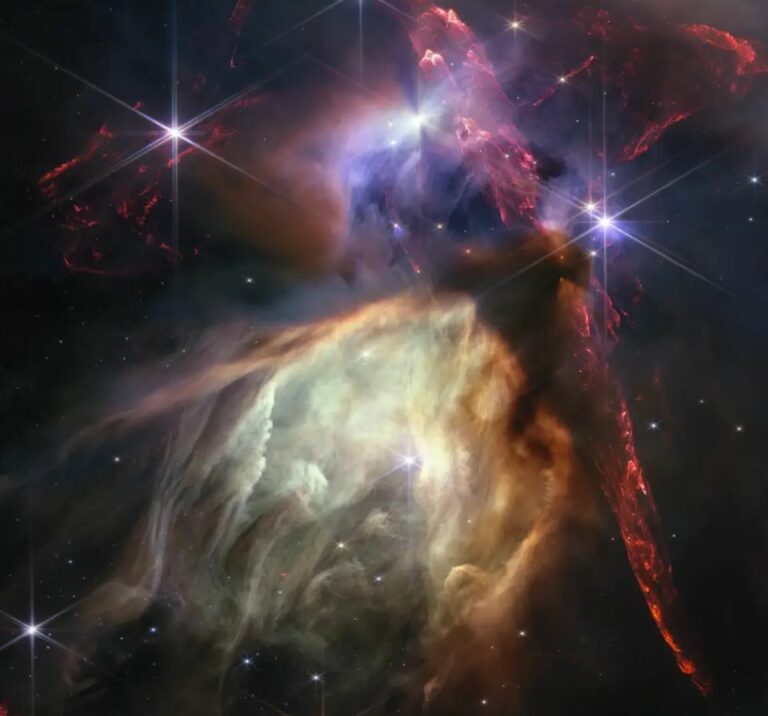NASA’s James Webb Space Telescope Unveils Mesmerizing Image Depicting the Genesis of 50 Stars Similar to our Sun
This remarkable space observatory has been utilizing its advanced infrared vision to explore the vast expanse of the universe for a year now. Positioned one million miles away from Earth, with capabilities surpassing its predecessor Hubble by a factor of 100, the Webb telescope has made groundbreaking discoveries. It has unveiled the earliest galaxies and supermassive black holes ever known to science, observed sandstorms on a distant planet, and even detected a fundamental molecular building block of life outside our solar system.
To commemorate Webb’s momentous year of achievements, NASA unveiled the breathtaking image above on Wednesday. Bill Nelson, the administrator of NASA, hailed it as “an impressionistic masterpiece,” while Vice President Kamala Harris described it as “spectacular.” Marina Koren, a space writer for The Atlantic, likened it to “space regurgitating more space” in a whimsical manner.
Here it is: @NASAWebb’s one-year anniversary image. Called Rho Ophiuchi, this area shows about 50 young stars in a cocoon of gas and dust. At 390 light-years away, it’s the closest star-forming region to Earth: https://t.co/A3e2XLx9Ef
Webb continues to #UnfoldTheUniverse. pic.twitter.com/tfXT8J2xBW
— NASA (@NASA) July 12, 2023
Webb’s image shows how stars are born from a dusty cocoon
According to NASA, the recently unveiled high-resolution image, taken by the James Webb Space Telescope, portrays approximately 50 stars in different phases of development. These stars are situated within the Rho Ophiuchi cloud complex, which happens to be the nearest star-forming region to Earth, located roughly 390 light-years away.
The relatively short distance in cosmic terms enables the Webb telescope to capture such a meticulously detailed picture. The absence of foreground stars obstructing the view further enhances the clarity of the image.

“In the Rho Ophiuchi image captured by Webb, we are granted a clearer view of a fleeting phase in the life cycle of stars. Our own sun underwent a similar stage in the distant past, and now we possess the technological capability to witness the beginnings of another star’s narrative,” stated Klaus Pontoppidan, a project scientist involved in the Webb mission, as expressed in a press release issued by NASA.
NASA’s press release further reveals that the darkest regions within the captivating image signify the presence of dense dust enveloping “protostars” as they take shape, reminiscent of a butterfly encased in its cocoon. As described by NASA, when these stars break free from their dusty enclosures, they give rise to immense jets of molecular hydrogen that bear a striking resemblance to cascades of sparkling red lava. These magnificent jets can be observed vertically on the right side of the image and extend horizontally across the top.

While not easily discernible in the image, NASA has noted that certain stars exhibit distinct shadows, suggesting the presence of swirling disks of material surrounding them. These disks are anticipated to eventually merge and give rise to planets.
In the center of the image, a luminous and hollow structure captures attention, resembling a portal or a cavern. NASA explains that this cavity, formed by a star significantly more massive than our sun, is composed of dust.
Do not forget to share your opinion with us to provide you with the best posts !




0 Comments